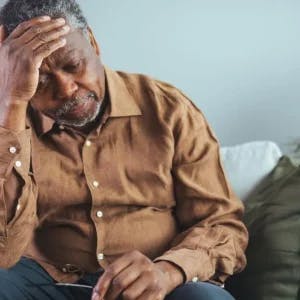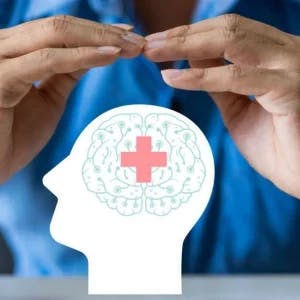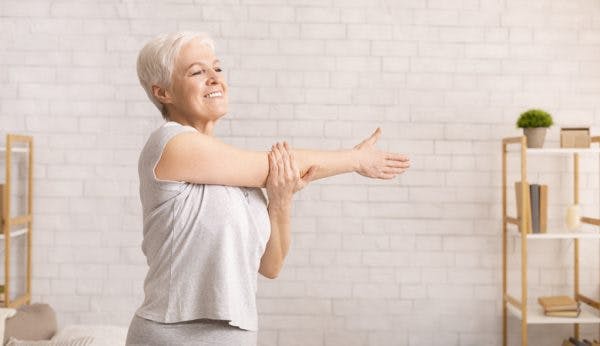More than one third of survivors experience difficulties with memory after stroke. Some individuals may have problems with remembering new information, while others may struggle to recall past memories. Fortunately, with cognitive rehabilitation, it is possible to improve memory after stroke.
This article describes why memory may be affected after stroke and provides an overview of a few techniques that may be recommended to improve memory. Use the links below to jump straight to any section:
- Why Memory Difficulties Occur After Stroke
- How to Improve Memory After Stroke
- Techniques to Overcome Memory Problems after a Stroke
- Can Memory Improve on Its Own After a Stroke?
Why Memory Difficulties Occur After Stroke
Memory involves three steps: creating the memory by encoding information, storing information for short or long periods of time, and recalling stored information when desired. There are a number of types of memory, including:
- Episodic memory: used for past or recent events and experiences
- Prospective memory: involves remembering future activities
- Semantic memory: used for concrete information, like facts and concepts
- Verbal memory: includes words, stories, or other verbally presented information
- Visual memory: used to recall pictures, faces, routes or other visual information
- Working memory: similar to a mental sticky note; provides temporary storage for a small amount of readily accessible information
Following a stroke, survivors may have difficulties with one or more of these types of memory, depending on which areas of the brain were affected. For example, a stroke in the hippocampus may affect the ability to form new memories, while episodic memories may be disrupted after a thalamic or medial temporal lobe stroke.
Fortunately, cognitive rehabilitation can improve memory after a stroke. Cognitive rehabilitation involves retraining cognitive functions such as memory and, when necessary, teaching compensation strategies to cope with impaired skills.
Both speech-language pathologists (SLPs) and occupational therapists can address memory problems after stroke. Because memory difficulties and language impairments often overlap, SLPs can be great resources for survivors struggling with cognitive tasks. When cognitive challenges affect day-to-day activities, occupational therapists can collaborate with the survivor to adapt or modify activities and recommend compensatory strategies.
How to Improve Memory After Stroke
The brain has an incredible ability to heal after injury and rewire itself. This process, known as neuroplasticity, allows the brain to adapt to experience to gain or regain functions after a neurological injury like a stroke.
Neuroplasticity is activated through massed practice, which involves consistently and repetitively performing specific tasks involving targeted skills. Over time, the brain adapts to activities practiced on a regular basis by strengthening associated neural pathways.
Therefore, in order to promote the recovery of memory skills through neuroplasticity, individuals are often recommended to consistently and repetitively practice memory-specific tasks and exercises. Consulting a speech-language pathologist and/or occupational therapist can be very beneficial, as these professionals can create personalized exercise programs and help determine whether other cognitive skills have been affected.
Techniques to Overcome Memory Problems
There are two methods for overcoming memory deficits among stroke patients: rehabilitative exercise and compensation strategies. Rehabilitative exercise focuses on regaining memory functions by practicing cognitive exercises to encourage neuroplasticity. On the other hand, compensation strategies offer “shortcuts” around memory impairments by using specific techniques to improve functional performance despite memory deficits.
Rehabilitative Exercises to Improve Memory after Stroke
Repetitively practicing rehabilitative exercises can be an excellent way to improve memory. Rather than using rote exercises, practicing memory activities is often encouraged, as many activities focus on the same skill sets and tend to be more engaging.
While working with a speech language pathologist to develop a customized treatment plan is recommended, here a few commonly used activities that may help improve memory after stroke:
- Games. Card games involving matching, such as Concentration or Go Fish, can help enhance working memory skills. More advanced games, such as Simon (involves repeating visual sequences) or Guess Who? (involves categorizing pictures by similarities and differences) can provide an added memory challenge.
- Paper and pencil activities. Many paper and pencil tasks, such as word searches, spot the difference pictures or Sudoku, can also enhance memory skills. These are often available in beginner, intermediate and advanced levels, allowing them to be easily modified to fit the survivor’s abilities.
- Technology-based exercises. There are a growing number of technology-based programs designed to improve cognitive skills such as memory. For example, the CT Speech & Cognitive Therapy App has over 100,000 exercises focused on improving cognition and language. It can also automatically adjust exercises to fit the survivor’s ability level. Other programs, such as Lumosity or virtual reality, may also boost memory skills.
When combined with memory exercises, regular physical activity and non-invasive brain stimulation may also boost neuroplasticity and promote recovery. Survivors should consult their doctor and rehabilitation team for more individualized recommendations.
Want to learn more about the CT Speech and Cognitive Therapy App? Get Started Here.
(Link opens a pop-up for uninterrupted reading.)
Compensation Strategies for Memory Problems after Stroke
While recovering memory functions is ideal, it can be very helpful to learn how to compensate for memory problems. When memory challenges interfere with daily activities, occupational therapists can help survivors find effective techniques to promote functional independence despite memory deficits.
Here are some helpful compensation strategies that may be recommended:
- Reminder apps. Using a reminder app or preset alarm on one’s smartphone can help survivors stay on top of important activities, such as feeding a pet or going to therapy appointments. Individuals should try to keep their phone with them or set in the same place — ideally a central location that can be heard from most rooms.
- Routine. Setting a consistent routine for essential daily activities, such as taking prescribed medication, can also help with memory difficulties. When possible, try pairing activities together, such as always taking medications while eating breakfast.
- Simplification. Simplifying common activities, such as cooking, may also help compensate for memory deficits. For example, rather than making meals with longs lists of ingredients and steps, consider making less complicated foods or using precut fruits and vegetables.
- Lists. Finally, it can be helpful to use lists to ensure tasks are completed properly. Keeping a grocery list or a list of regular cleaning tasks that need to be completed each week can help individuals maintain their independence despite memory challenges.
Using a combination of rehabilitative exercises and compensation strategies can allow survivors to function optimally as they pursue recovery. Working with family members and the rehabilitative team can help survivors find the most beneficial strategies to promote both recovery and independence.
Can Memory Improve without Rehabilitation?
While not always the case, it is possible for stroke-related memory deficits to improve on their own. This phenomenon, known as spontaneous recovery, usually occurs during the acute (early) stages of recovery.
There are a few possible reasons for this: 1) brain swelling is reducing during this time; 2) neuroplasticity is often heightened during the acute stage; and 3) the intensity of rehabilitation is usually highest while individuals participate in inpatient rehabilitation, which involves several hours of therapy per day during first few weeks to months after the stroke occurred.
While the idea of spontaneous recovery can provide hope, it should not be relied upon. Instead, a proactive approach is often best. By practicing cognitive rehabilitation exercises on a daily basis, individuals can encourage the brain to continue recovering well beyond the acute stages of recovery.
Improving Memory After Stroke
Impaired memory is a common cognitive effect of stroke that may be improved through rehabilitation. Speech-language pathologists and occupational therapists are experts on this issue. Together, they can create a rehabilitation plan tailored to the survivor’s strengths and needs.
The best way to improve memory after stroke is to practice memory-intensive cognitive rehabilitation exercises. However, if memory challenges persist, it may be beneficial to use compensation strategies to promote independence despite memory problems. While spontaneous recovery may occur and provide a boost in memory functions, pursuing rehabilitation is usually the best way to optimize outcomes.















